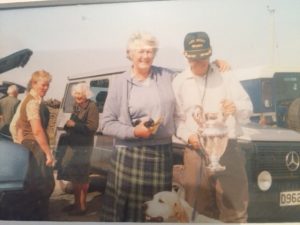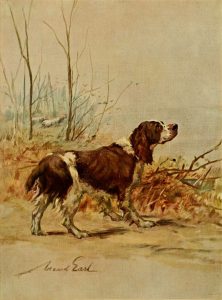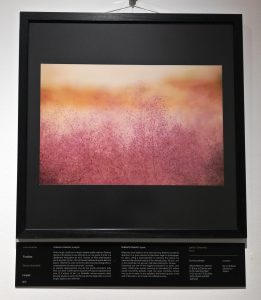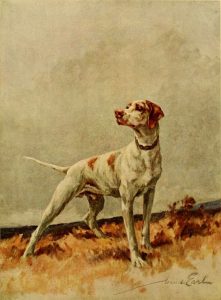di Ivan Torchio (1988), per gentile concessione dell’autore.
Antonio Tonali, classe 1895, cinofilo, cacciatore, soprattutto uomo di grande cultura, intelligenza, umanità e dotato di una modestia poco comune.
“Quando ero in collegio, era un po’ come essere prigioniero: chiudevano il portone ed a me veniva una grande tristezza, mi scoppiava il cuore. Pensavo al mio amico Pinu che aveva, anche lui, in mente i cani. Quelli erano tempi duri! Un ragazzo di dieci anni doveva già lavorare come un uomo e, tra di loro, quelli appassionati risparmiavano la mancia che, alla Festa, veniva loro consegnata per comperare le castagne o qualche altra piccola cosa (allora, non c’erano i Caffè e cercavano di mettere da parte soldi per comperare un cane. Non Io dicevamo nemmeno al toro papà (i tempi erano troppo duri per questi “lussi”) ma io, loro coetaneo, venivo messo al corrente questi segreti e li ammiravo. Me ne guardavo bene però dal dire queste cose, altrimenti mi, avrebbero portato… al manicomio. Vivevamo di sogni: ci bastava avere un “bastardino”, magari col pelo un po’ lungo, e fantasticavamo che avesse la discendenza dal setter… così avevamo sempre la testa per aria. Però mi sarebbe spiaciuto se mi avessero bocciato, per mia mamma, lei ci teneva che io studiassi. Ricordo che un professore aveva capito che qualcosa in me non andava ed, un giorno, mi fece parlare, alla fine mi disse “tu sei uno di un altro mondo”. Allora avevo nove anni ed ho capito che le cose stavano davvero così… credo che questa affermazione sia tuttora valida.”
Seduti davanti al camino acceso, con una canina pointer bianco arancio ed un setter che ci osservano incuriositi, ascoltiamo Antonio Tonali che vestito, come sempre, da cacciatore, con vivacità giovanile, ci racconta di cani, di beccaccini e di persone. Il richiamo a… quell’altro mondo, palpabile e ciò che ne determina la percezione sono la serenità e la semplicità che il nostro personaggio e l’ambiente che lo circonda ci trasmettono. La grande passione per i cani, elevata a “ragione di vita” in contrapposizione alla violenza della Prima Guerra Mondiale vissuta drammaticamente in prima persona. Una vita semplice, forse un po’ primitiva, ma solo in apparenza, in realtà essenziale ma arricchita dalla semplicità e dalla genuinità nel rapporto con gli animali e con gli uomini, cui è sottesa una grande cultura ed una grande carica di umanità. Affascinati dall’uomo, ci ricordiamo dell’importanza di Tonali come testimone dei primi passi della nostra cinofilia e gli domandiamo di descriverci i cani di allora (la fine del secolo scorso – Fine 1800 n.d.r.).
“Anche allora, in ogni paese, non c’erano più di alcuni cacciatori bravi e questi avevano cani bravissimi. I cacciatori avevano fucili a bacchetta con la canna che sembrava un tubo di stufa sparavano polvere nera e, dopo il colpo, dovevano spostarsi sul lato per vedere cosa era successo al di là della cortina di fumo. lo ero ragazzo e diventavo matto a vedere il lavoro dì quel cani: bracchi e pointers.”
— Lei parla di pointers, ma c’erano già in Italia? “Che sappia io i primi pointer venivano da Monza, erano cuccioli che qualche guardiacaccia della tenuta reale vendeva e costavano 50 lire. Pensate che, qui a Villanterio, il migliore terreno agricolo costava 40 lire alla pertica. Io ammiravo molto questi cacciatori che spendevano un patrimonio per avere uno di questi cani ed ammiravo soprattutto quelli che facevano grandi sacrifici per mettere da parte i soldi.”
– Come facevano ad esserci i pointers a Monza? “Era una riserva di caccia di Umberto I e lui, sicuramente, li avrà avuti in regalo dall’Inghilterra.”
– E Lei quando ha avuto il primo cane? “Finché mio papà è stato in grado di andare a caccia i cani li aveva lui, io sono subentrato gradualmente; un giorno lui ha detto che non dovevamo contarlo più, come cacciatore; aveva 80 anni e disse che, in campagna poteva ancora andarci, col bastone, ma, a caccia, aveva finito. Allora, sapete, i vecchi non avevano egoismo, quando arrivavano a 80 anni (non erano molti però ad arrivarci), molto ragionevolmente, dicevano: la vita finisce, dovete continuare voi. Così comperai una cagnina “già fatta”, da un fittavolo vicino a Pavia, mio papà l’aveva vista e mi diede le 40 lire d’argento con cui la pagai. Andai a prenderla in bicicletta e lasciai al fittavolo il mucchietto dei 40 “cavourini” d’argento… in fondo un po’ mi piangeva il cuore nel vedere quel mucchietto lasciato sul tavolo. Era una cagnina tutta marrone che poi ho fatto coprire e mi ha dato un cucciolo col quale ho iniziato con le “sgnepe”; di beccaccini se ne trovavano dappertutto e così uno, due, tre, io cercavo di sparare bene e li facevo riportare (per farle capire) così ha cominciato a fermare.”
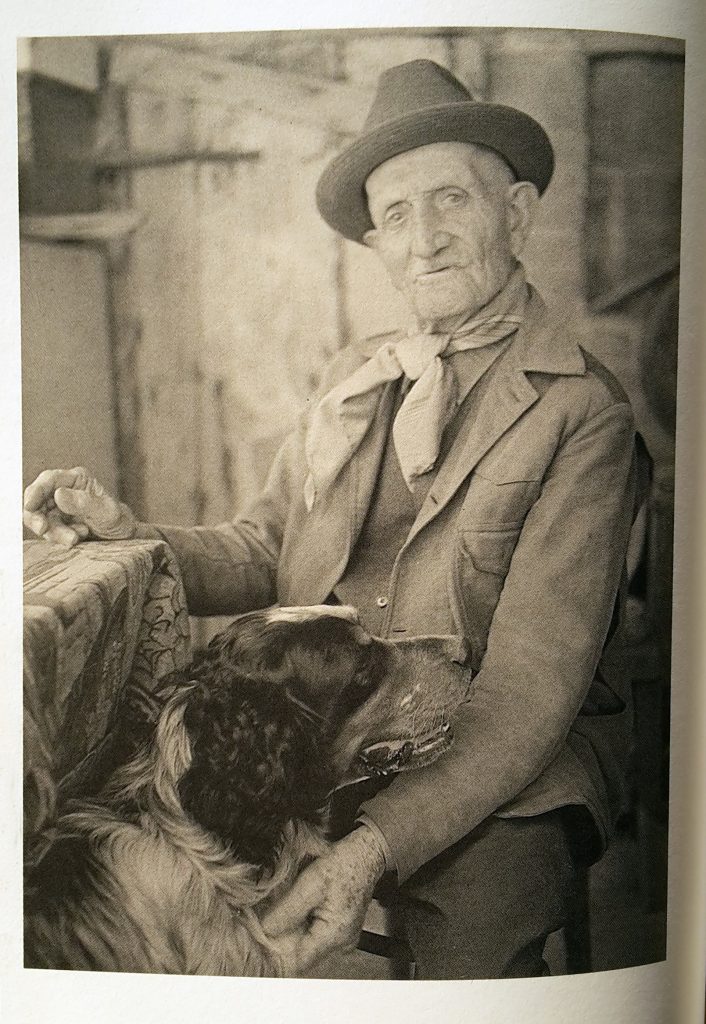
– Con le prove a beccaccini, quando ha cominciato? “Io leggevo sul “Cacciatore Italiano” delle prove a beccaccini, leggevo le polemiche tra Colombo, Griziotti ed altri… mi piaceva perché capivo che erano appassionati che s’intendevano di cani e , di beccaccini, che erano grandi cinofili. Ho cominciato per caso: un giorno cacciavo col mio cane ed signore, dopo avermi osservato a lungo (non riuscivo a capire cosa volesse) mi disse di andare nei “Paludi” dove provavano i cani e dove facevano anche le prove a beccaccini. Sono andato ed ho visto dei cani proprio belli, dei pointers molto tipici, però anch’io, con la mia cagnina, non ho fatto brutta figura ed allora, ho preso un po’ di coraggio. Ho cominciato con una cagnina che il mio amico Preti, il veterinario, aveva comperato a Copiano e poi affidata a me. Io non volevo andare alla prova perché… come potevo competere con tutti quei grandi cinofili che avevano dei pointers che mi facevano restare incantato? Però hanno insistito e sono andato. Il mio amico Preti non è venuto (forse aveva paura che facessi fiasco) ma ci ha dato la sua macchina ed ha detto al meccanico del paese che venisse a guidarla lasciandoci auto ed autista, tutto il giorno, a disposizione. Con me c’erano un mio amico, che era segugista, ed il papà di Antonio Ridella (Antonio era ancora un bambino). Lei (la cagna n.d.r.) è andata proprio bene, io invece mi ero impantanato e non riuscivo ad andare a servire la cagnina. I beccaccini erano avanti 10 – 15 metri e son volati e la cagnina… niente ed io che non riuscivo a muovermi e non capivo più nulla… era la mia prima prova quindi si può capire; se il fischietto non fosse stato legato con lo spago, forse l’avrei mandato giù… Giudicava Colombo e mi diceva di chiamare la cagnina ma io, pur nella mia confusione non la chiamavo, e poi mi sono anche spazientito e gli ho detto che non la chiamavo perché, altrimenti, avrei disturbato l’altro cane che era in coppia con la mia. Non era giusto disturbare quell’altro cane dal momento che la mia aveva fermato ed era stata corretta al frullo delle “sgnepe”. E così ho vinto e così è iniziata la malattia delle prove al beccaccino”
– Com’era organizzata la cinofilia a Pavia? “C’erano delle grandi personalità, Coppaloni e il mio amico Giannino Radice, Griziotti, Bovina ed altri, io sono sempre rimasto un po’ fuori, cosa dovevano farsene di uno come me che potevo solo… far ridere i polli. Poi mi hanno un po’ convinto, dicevano che bisognava darsi da fare per il bene della cinofilia perché la maggior parte dei cacciatori sosteneva i cani bastardi e, invece, si doveva dimostrare il contrario. Mi ricordo di tanti altri oltre a quelli che ho già detto: Nasturzio, l’armatore di Genova che importò i setters e li portò poi a Rocca de Giorgi e poi, di lì, cominciò l’era delle prove ed allora c’erano: Necchi che aveva rilevato l’allevamento di bracchi di Colombo, Rettani, il dott. Bionda, Biondet e poi Rino Colli che era il segretario della “Scuderia Lomellina.”
– Lei era molto amico di Antonio Ridella? “Antonio era di qui e l’avevo conosciuto da bambino, era lui che mi portava anche in giro e che mi ha fatto conoscere tanti cinofili. Ma io… andare in città… andare via dalla mia campagna, finiva che andavo in confusione e allora mi dicevo: hai visto, dovevi stare a casa, cosa vai a fare insieme a tutta questa gente importante?”
-Qual è il cane che ricorda di più? “Tutti. Però i cani sono come i cristiani: ci sono quelli fortunati e quelli che nascono sfortunati. Posso ricordare Cirano. Ha avuto dei grandi risultati sì, però, non è stato capito, solo Griziotti aveva capito che grande cane era. Io dicevo tante volte a Cirano: sei arrivato tardi, dovevi arrivare quando c’era ancora Colombo. Ma i cani non si possono dimenticare… nessuno. Bisognerebbe fare il monumento a certi grandi cani, non farlo a Napoleone o a quegli altri balordi che ammazzano la gente: chiamare lo scultore e far fare il monumento ai cani.”
– Ha conosciuto Pollacci? “Altroché, aveva i setters gordon, bravissimi. Ricordo North, era un bellissimo stallone, il migliore che c’era, ho – avuto un figlio di North, ma l’ho regalato.”
— Come mai, non andava bene? “Andava benissimo, era ancora un cucciolone ma un ragazzo che conoscevo, Gianni Bianchi, un giorno è venuto da me per dirmi che la sua cagna (era una cagnina che era stata anche qui da me) era rimasta uccisa. Mentre lui mi raccontava io pensavo: ma guarda un po, adesso è senza cane mentre io ne ho 5 o 6 buoni… la sera sono andato alla stazione dei treni (c’era il tram che andava a Pavia e lui doveva tornare con quello) col cucciolone al guinzaglio e gli ho detto: prendilo è tuo, ha pochi mesi ma lavora bene.”
Vai all’articolo precedente di Ivan Torchio qui.
